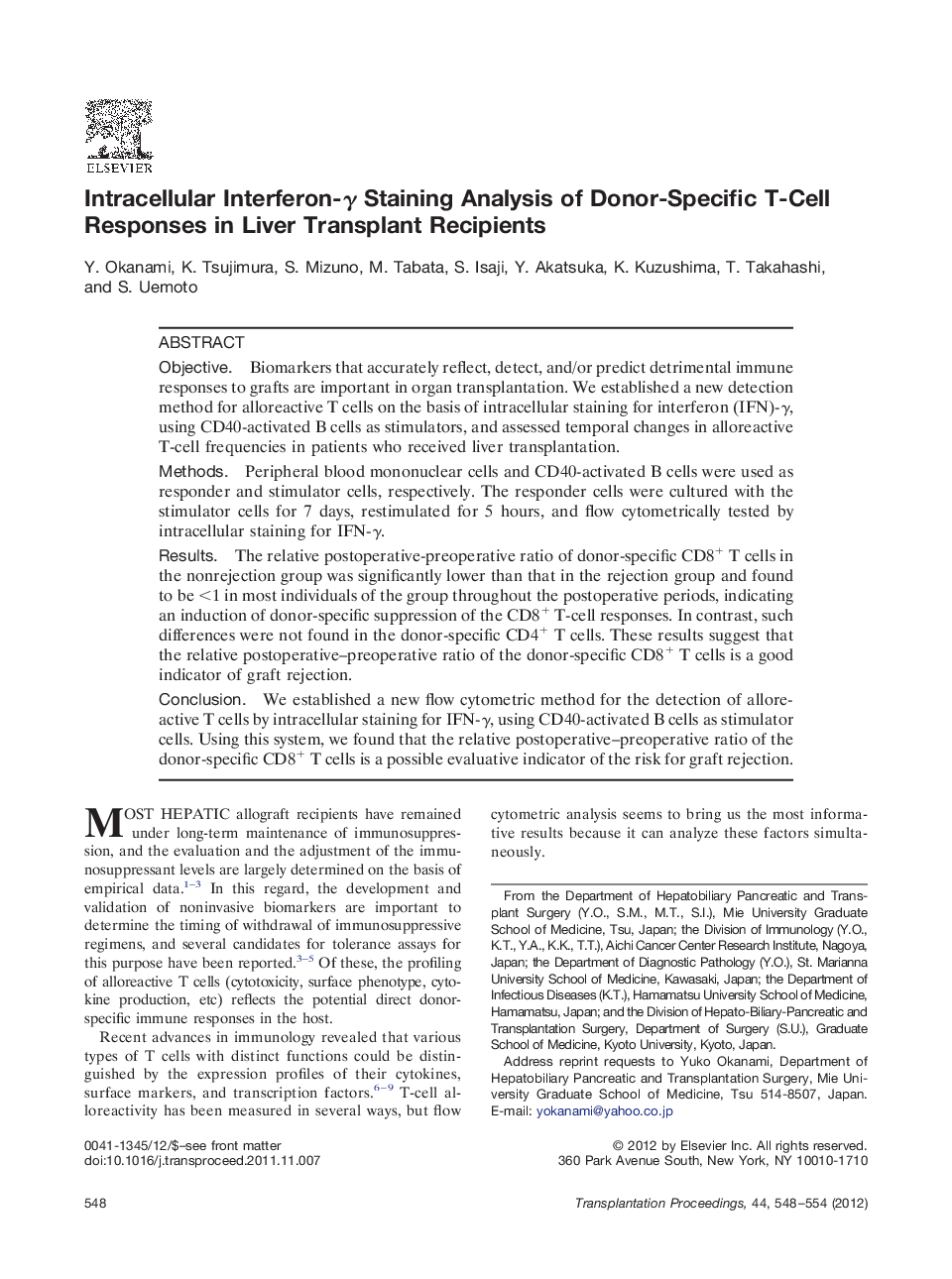| Article ID | Journal | Published Year | Pages | File Type |
|---|---|---|---|---|
| 4260398 | Transplantation Proceedings | 2012 | 7 Pages |
ObjectiveBiomarkers that accurately reflect, detect, and/or predict detrimental immune responses to grafts are important in organ transplantation. We established a new detection method for alloreactive T cells on the basis of intracellular staining for interferon (IFN)-γ, using CD40-activated B cells as stimulators, and assessed temporal changes in alloreactive T-cell frequencies in patients who received liver transplantation.MethodsPeripheral blood mononuclear cells and CD40-activated B cells were used as responder and stimulator cells, respectively. The responder cells were cultured with the stimulator cells for 7 days, restimulated for 5 hours, and flow cytometrically tested by intracellular staining for IFN-γ.ResultsThe relative postoperative-preoperative ratio of donor-specific CD8+ T cells in the nonrejection group was significantly lower than that in the rejection group and found to be <1 in most individuals of the group throughout the postoperative periods, indicating an induction of donor-specific suppression of the CD8+ T-cell responses. In contrast, such differences were not found in the donor-specific CD4+ T cells. These results suggest that the relative postoperative–preoperative ratio of the donor-specific CD8+ T cells is a good indicator of graft rejection.ConclusionWe established a new flow cytometric method for the detection of alloreactive T cells by intracellular staining for IFN-γ, using CD40-activated B cells as stimulator cells. Using this system, we found that the relative postoperative–preoperative ratio of the donor-specific CD8+ T cells is a possible evaluative indicator of the risk for graft rejection.
